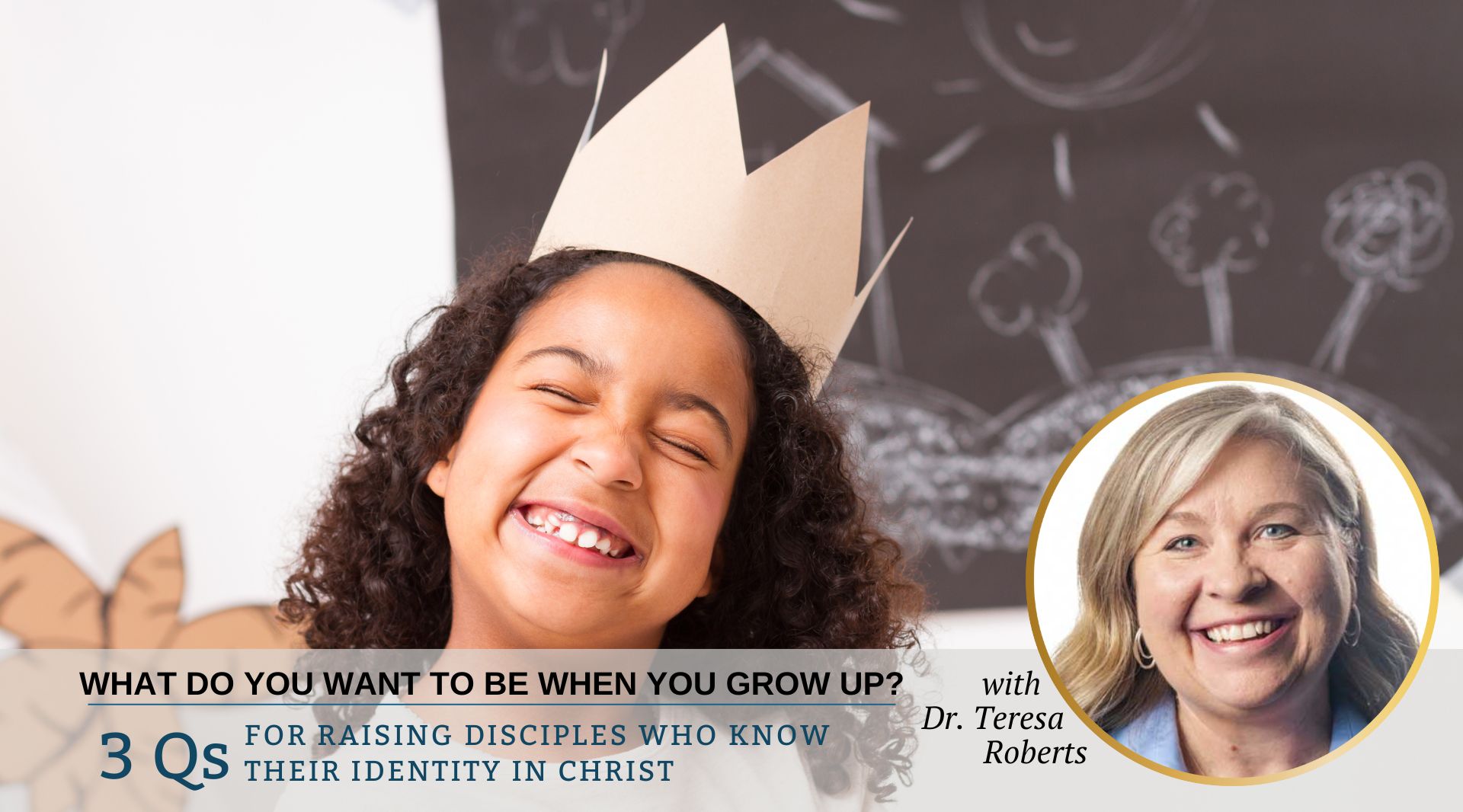A foundational truth is that God created us in his image. As followers of Jesus, we are to look more and more like him. It’s never too soon to start teaching this beautiful reality to even the littlest among us, whether they are your children, step-children, Sunday school students, or kids in your neighborhood. In this introductory post, Teresa Roberts lays a foundation for helping us teach kids about their unique, God-given identity.
My second-grade teacher, Mrs. DeYoung, handed out pieces of paper one day while instructing us to “Draw a picture and write a description of what you want to be when you grow up.” We all knew that we would eventually hang our papers on a bulletin board outside our classroom for everyone to see during the upcoming open house and parent-teacher conferences. My class was filled with those who dreamed of becoming doctors, teachers, professional athletes, and first responders. But my aspirations were higher. That morning I drew a picture of a woman with long blonde hair and blue eyes standing behind a podium with a big circle in the front. On the lines below I recorded, “When I grow up, I want to be the first female president of the United States of America.”
Identity formation is the process by which a child forms a unique view of themselves in relationship to others. As she explores independence from parents and others, a child develops a sense of self. Our identities are shaped by our families, friends, peers, societies, cultures, and social groups. Regardless of what aspirations a child has for her future vocation, everyone who participates in the discipleship of a child should be guiding her toward finding her identity in Christ as she develops a personal relationship with God.
Considering the ways I have been encouraged since infancy, it is no surprise I found my identity in Christ and my vocation in ministry. I regularly sang “special music” at church from the time I was two years old. I started turning the pages for the church organist while my parents were at choir practice when I was seven. I led my third-grade class in reciting Scripture on Promotion Sunday. I played piano for kids’ worship when I was in junior high. My youth minister equipped me to lead a Bible study beginning my freshman year of high school. I led congregational singing for our church as a high school junior. I participated in school and extracurricular activities throughout my childhood, but my identity formed within a Christian community as I traveled along the discipleship map is what set a trajectory for a life of service to God.
As a child reaches adolescence he begins to wrestle with his identity. He begins to become aware of himself as separate from others and imagine his future self. Though he might articulate his search for identity in different ways, at the core he is struggling to answer three common questions: Who am I?, Where do I fit in?, and What is my purpose? (I slightly modified the three questions that were addressed in the book, 3 Big Questions that Change Every Teenager.)
Fortunately, Scripture answers these questions for us. We don’t have to wait until our children reach adolescence to begin pointing them to the answers.
In the next post, we’ll consider the first question about our identity: Who am I?.


Teresa Roberts
Teresa Roberts is Professor of Ministry and Christian Formation, Program Director of Children’s Ministry, and a vice president at Ozark Christian College. She is an expert in children’s spiritual formation training with more than 25 years of ministry experience.
Dr. Roberts holds a Master of Arts in Family and Youth Ministry, a Master of Divinity, and a Doctor of Ministry. She serves in children’s ministry at Carterville Christian Church where she attends with her husband and step-daughter.

